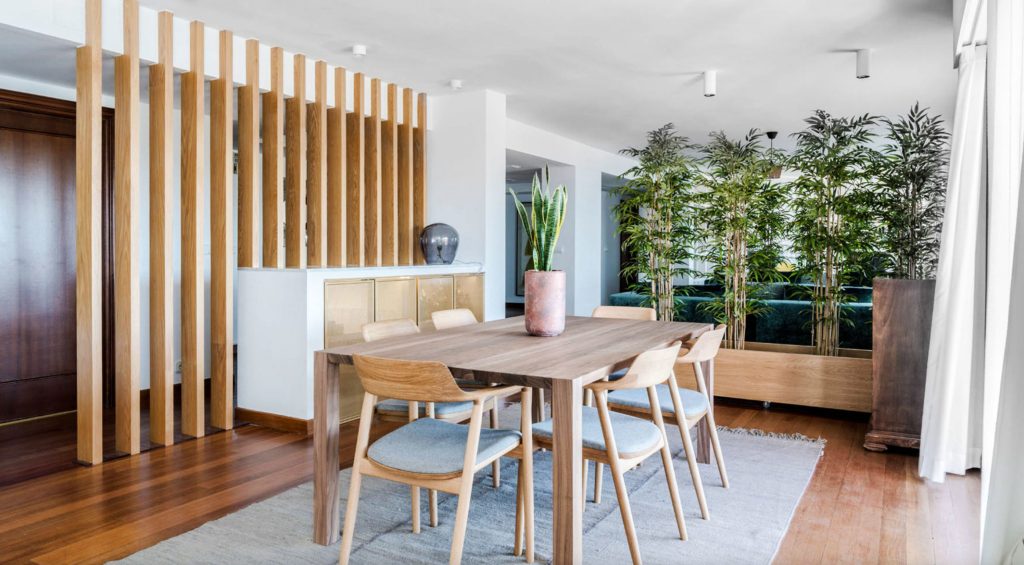
I stumbled across the term “Biophilic Design” a few months ago and dove into an exploratory phase. Aside from sounding really smart (who doesn’t want that?) conversations around biophilic design have been growing in popularity. As we become more invested in health and wellness and the awareness of how our environment affects us, we naturally discover these principles.
At a basic definition, “Biophilic” means “a human tendency to interact or be closely associated with other forms of life in nature”. Basically, people are drawn to living things like plants, animals and living materials. We all “know” (whether we take the time to do it or not) that being in nature makes us healthier and happier. So, here’s three ways we can employ biophilic design in our homes.
Nature in space
This includes physical elements such as water, plants, fresh air, animals, sunlight and scents. Indoor plants have become a huge trend in recent years. Remember all the living walls that started popping up? That’s right, we forgot how much better we feel when we’re interacting with plants regularly! Animals were a huge comfort during covid to provide us with love and connection during a lonely time, and let’s not forget the importance of sunlight. Direct exposure raises our serotonin levels and supports strong mental health.
Nature Analogues
Think patterns, images and materials that reflect nature or come directly from nature. This is a category I use a lot in my own work when designing accessories and home goods. Choosing a natural material such as wood or stone can elevate a piece past where plastic and manmade materials can, simply because of the principles of biophilic design. Studies have shown that exposure to wood and stone can reduce stress, improve your cognitive performance and enhance your mood. Something to think about when purchasing your next side table or home decor item. Plus I just love texture, and nature always does it best. 🙂



Nature of the space
This one surprised me, but when I started to wrap my head around it, I fell in love. This category talks about how a physical space feels, and its similarity to spaces in nature.
- Prospect (a view or lookout point )
You may notice, you like to stand at the highest point of your deck and look out over the backyard. You may not have realized you were instinctively drawn to this spot. It’s similar to looking out over a plain or a valley in nature. Humans like high vantage points. Looking over a family room from the second story or placing a window at the top peak, these are all ways we can design space that uses this principle. - Refuge (a nest or place of safety)
If you’ve ever raised a young child or found yourself in a moment of vulnerability, the idea of hiding ourselves away for safety is instinctive. Modern design often promotes big open spaces, but let’s not forget the importance of small spaces to offer security and promote feelings of safety. - Mystery (obscured views, exploration)
How can we create mystery in our homes? I think this one has almost been forgotten. I can’t help but think back to my childhood when we would visit old estates and castles on holiday. There were secret doorways in the paneling, back stairways connecting the rooms. So mysterious! Similar to spotting a narrow path snaking off into a dark forest. A compelling feeling of adventure invigorates and excites us. - Risk/peril (an identifiable threat coupled with safeguard)
This one surprised me, but I think a little risk and peril is useful. As we’ve all been learning about mental health through covid, the resounding phrase “be present” stands strong. I would ask, what can bring you into the present more than a bit of danger? Not much! Perhaps hopping from stone to stone on a path in the backyard or a tall ladder on a bookcase is just the thing.
So, at your next dinner party feel free to rattle off a bit about biophilic design and impress your friends 😉 And be mindful with your purchases, choosing a natural material can enhance your experience for years to come and bring health and happiness.
-Suzanne

Very interesting. I could make a personal connection to this concept. Thanks for sharing.
LikeLike
I learned something new today!!
LikeLike
Haha, there you go! 🙂
LikeLike
Quite interesting and it brings to mind some of the things a friend already practices.
LikeLike